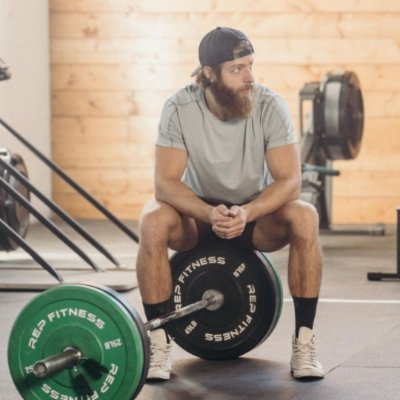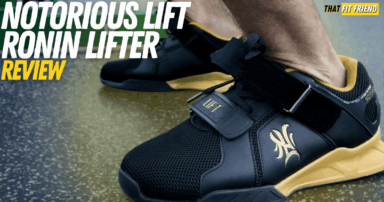That Fit Friend is supported by its readers. I [Jake Boly] run this site myself and buy the gear I review. If you purchase through my site, I may earn commissions on sales, read more here!

Nike has a lot of strong-performing cross-training shoes on the market. The Nike Metcon 9, Nike Free Metcon 5, and Nike Air Zoom TR 1 are all designed for versatile training but differ greatly.
If you’re contemplating new Nike training shoes and comparing the Nike Metcon 9 versus Free Metcon 5 versus Air Zoom TR 1 you’ll want to acknowledge their performance nuances for your needs.
After putting in countless workouts and reviewing all three of these shoes, I wanted to build a comparison that truly highlights who should go for which shoe based on how you train.
Nike Metcon 9 vs Free Metcon 5 vs Air Zoom Tr 1 Performance
To thoroughly test how these three Nike shoes compare, I pushed them in four different training verticals: Lifting, cross-training, short runs, and daily wear.
Testing the Metcon 9 vs Free Metcon 5 vs Air Zoom TR 1 for Lifting
In all of my cross-training shoe reviews, I perform consistent lifting tests and will seek out where a shoe’s midsole starts to compress. This is important to acknowledge because instability typically follows midsole compression.
- Nike Metcon 9 Top Lifting Tests: 515 lb deadlift, 405 lb squat
- Nike Free Metcon 5 Top Lifting Tests: 385 lb deadlift, 275 lb squat
- Nike Air Zoom TR 1 Top Lifting Tests: 365 lb deadlift, 225 lb squat
In the context of lifting, the Nike Metcon 9 will be your strongest shoe of these three models. This model’s dual-density midsole has a firmer feeling and it’s a lot more dense so it doesn’t compress as easily when lifting.
If one of your main requests is to have a training shoe that performs well for heavy strength sessions, such as barbell back squats, deadlifts, or even machine work, then the Nike Metcon 9 will be your best bet.
Thus far, I’ve pushed this shoe hard with my barbell lifts and have liked it for the most part. It’s worth noting that this isn’t my favorite Nike Metcon to date and I did notice some instability when doing 275 lb walking lunges but it should work for most lifters.
For those not solely concerned with stability and lifting, then the Nike Free Metcon 5 is my next pick for giving you the most lifting performance without being limited to that training vertical.
This model has a fair amount of stability that will work for moderate strength work and it does a better job of blending versatile training with that lifting. I often language the Free Metcon 5 as being a good “in-betweener” for the strength and HIIT individual.
My only gripe with the Nike Free Metcon 5 for lifting is that it doesn’t have a full rubber outsole so with heavier hack squats and leg presses, I’d suggest being conscious of your traction as you get heavier with your machine work.
The Nike Air Zoom TR 1 is the least stable shoe of these three models. This shouldn’t come as a surprise, though, since this model is built with an Air Zoom packet throughout its sole.
This shoe’s midsole is a little more plush and has a bunch of bounce, so when you factor in this component with the Air Zoom packet, you’re left with a shoe that can provide some stability but will hit its wall a lot faster than the Metcon 9 and Free Metcon 5.
If you’re not going super heavy with your strength training, and keeping lifts under 315 lbs for example, then the Air Zoom TR 1 will be fine. This shoe will be best suited for beginner and intermediate lifters who love to hit free weight and machine work every week.
Winner: Nike Metcon 9. If your goals revolve around lifting and CrossFit, then you’ll want to opt for the Metcon 9, hands down.
Testing the Metcon 9 vs Free Metcon 5 vs Air Zoom TR 1 for Cross-Training
When it comes to cross-training you’ll want to explore either the Nike Free Metcon 5 or the Air Zoom TR 1. These two models will be the superior picks for HIIT workouts, athletic-style training, and explosive exercises.
The Nike Free Metcon 5 will be best for those who want a shoe with a bit more stability that can serve as a hybrid-style training shoe. For example, if you like doing workouts where you blend lifting, plyometrics, and conditioning works like sleds you’ll enjoy this model.
This model’s medium-density Nike Free midsole has a ton of flexibility in the forefoot and through the midfoot. The upper also does a good job of form-fitting around the foot to give you a more sock-like fit when training.
The Nike Air Zoom TR 1’s claim to fame is its Air Zoom packet. This model features a full-length Air Zoom packet that sits under the insole above the midsole, giving this model a lot more “bounce” than its peers.
I think if you’re in the camp of individuals who primarily want a shoe for classes, HIIT, and short runs, then the Air Zoom TR 1 can be a great option to look into. It has a more plush feeling compared to the Free Metcon 5.
This feels noticeably more responsive than the Free Metcon 5 and that’s why I also recommend not training super heavy in this shoe above. You will start to feel the air packet once you get to certain weights and this can hinder stability.
The Nike Metcon 9 can work for cross-training, however, its density and TPU heel negatively impact its performance. This shoe can feel clunky and it doesn’t have the best cross-functionality for mixed modality training.
I also think the Metcon 9 runs relatively hot compared to the Free Metcon 5 and Air Zoom TR 1 due to its heavier upper which is also a reason I don’t love it for the person who is only cross-training and not worried about lifting and CrossFit.
Winner: If you want a shoe for HIIT and lifting, go Nike Free Metcon 5. If you like a lot of bounce with your training shoes then opt for the Air Zoom TR 1.
Testing the Metcon 9 vs Free Metcon 5 vs Air Zoom TR 1 for Short Runs
- Nike Metcon 9 Running Recommendation: <1 mile
- Nike Free Metcon 5 Running Recommendation: 1-2 miles
- Nike Air Zoom TR 1 Running Recommendation: 1-3 miles
For short runs, the two dominant models will be the Nike Air Zoom TR 1 and Nike Free Metcon 5. These shoes are both pretty solid bets for short runs that you program pre or post-workout.
For example, I found the Nike Free Metcon 5 to be comfortable enough to do runs that ranged from 1-2 miles before, after, or staggered throughout my workout. This shoe should work for those doing running in classes like Barry’s, for example.
The blend of stability and responsiveness ae a nice feature of Free Metcon 5 and with its forefoot and midfoot flexibility it feels good for running styles that have a forefoot and midfoot strike.
I also like the comfort of the Nike Free Metcon 5 for walking. If I’m taking the dog out for a few miles or running errands, then I feel like this is an easy shoe to reach for and wear casually.
That said, I do think the Nike Air Zoom TR 1 feels a little more comfortable for runs in the 1-3 mile range. This shoe’s midsole and Air Zoom packet give you a plusher and more seamless feeling ride.
This model feels good when doing 1-mile warm-up or cooldown jogs or tackling 400-meter interval runs intra-workout. For example, if you do hybrid-style workouts regularly then the Air Zoom TR 1 will be your best shoe of these three.
I also like how the toe spring and slight heel bevelling contribute to better running performance in the Air Zoom TR 1. The heel can be a little uncomfortable at times in the Free Metcon 5 if you’re predominately a heel striker.
The Nike Metcon 9 is the weakest performer in the running vertical. This model’s clunky TPU heel wrecks its performance for running and walking and it’s just not a good hybrid training shoe.
Nike Metcon 9 vs Free Metcon 5 vs Air Zoom TR 1 Construction
Before you buy any of these shoes it’s a good idea to understand what you’re getting regarding their construction details.
Outsole
The Nike Metcon 9 features a herringbone tread patterning on its forefoot and heel and with a break in this shoe’s midfoot where the medial rope guard inserts. The grip of this shoe is strong on different surfaces.
While its grip is good, I don’t love the midfoot break in the Metcon 9’s outsole with the rope guard. This feature can cause durability issues with rope climbing, ironically, and it can cause a feeling of the midfoot caving in when loading heavy single-leg work.
The Nike Free Metcon 5 features rubber outsole overlays over its heel and forefoot. Indoors, this shoe does a fairly good job with grip, however, outdoors the exposed foam and Nike Free construction can be problematic for durability and picking up rocks.
The Nike Air Zoom TR 1 has a full rubber outsole that features lugs in the forefoot and ridges toward the heel. I found this shoe to have exceptional grip on different surfaces and I appreciate this for my tough workouts.
I also think the Air Zoom TR 1’s outsole takes an edge for long-term durability when compared to its HIIT-focused peer the Nike Free Metcon 5.
Midsole
Of these three shoes, the Nike Metcon 9 has the densest and firmest midsole material. This model is built with a dual-density foam which is designed to be more stable on the outside of the shoe and plusher in the middle.
This feature is designed to give you more stability on the outskirts of the model while keeping the shoe a little more plush through its forefoot for things like jumping rope. The TPU plate in the heel is dense and doesn’t compress whatsoever with the midsole.
The Nike Free Metcon 5 is constructed with a medium-density foam that you can compress with your fingers fairly easily. The material is built to give a lot of flexibility through the forefoot and midfoot for versatile training.
In the Nike Air Zoom TR 1, you have a plush foam midsole with an Air Zoom packet built into the top of it. The blend of these two materials gives this model a much softer feeling compared to the Free Metcon 5 and Metcon 9.
Out of the box, I do find the Air Zoom TR 1’s midsole to run a little stiff regarding its articulation but this broke in after a week of tough training sessions.
Upper
The Nike Metcon 9 is built with a layered mesh upper and it has haptic overlays over its forefoot. This upper is layered and built to be heavier to give you more durability and resistance from abrasion.
While I haven’t experienced any issues yet with my Metcon 9’s upper it doesn’t have the best breathability. If you’ve worn Nike Metcons before this shoe feels like a step under the Metcon 8’s and significantly hotter than the Metcon 7s.
The Nike Free Metcon 5 features a ventilated mesh upper that has textile overlays over the toe, midfoot, and heel. This shoe does a good job with forefoot breathability and it’s a little more malleable than the Metcon 9 and Air Zoom TR 1’s uppers.
In the Nike Air Zoom TR 1, the upper is built with a mesh material with ventilated holes in the forefoot and textile additional overlays covering the toe box.
In these three shoes, the Air Zoom TR 1 comes in at number 2 for its upper breathability. To be honest, I’m surprised this model’s upper isn’t more lightweight and breathable based on the context of how it’s designed to be used.
Laces and Tongue
- Nike Metcon 9: 5 Eyeles, Padded Mesh Tongue With Lace-Lock Feature
- Midfoot Security Rating: 4.2/10
- Nike Free Metcon 5: 4 Eyeles, Padded Mesh Tongue
- Midfoot Security Rating: 4/10
- Nike Air Zoom TR 1: 5 Eyeles (6th for lace-lock), Padded Mesh Tongue
- Midfoot Security Rating: 3.9/10
Weight, Drop, and Insole
The weights and heel-to-toe drops of these shoes are all pretty similar and sit around 4-5mm regarding drops. The Nike Metcon 9 is the heaviest of these shoes.
- Nike Metcon 9: 12.65 oz (size 10), 4mm heel-to-toe drop, thin foam removable insole
- Nike Free Metcon 5: 10.05 oz (size 10), 5mm heel-to-toe drop, thin foam removable insole
- Nike Air Zoom TR 1: 10.6 oz (size 10), N/A heel-to-toe drop, thin foam removable insole
If you have additional questions about the construction breakdown of these three models, please don’t hesitate to ask in the comments below.
Nike Metcon 9 vs Free Metcon 5 vs Air Zoom TR 1 Sizing
- Nike Metcon 9 Sizing: True to size
- Nike Free Metcon 5 Sizing: True to size
- Nike Air Zoom TR 1: True to size
The sizing is fairly consistent for all three of these shoes regarding length, however, their width varies pretty greatly and you’ll want to consider this if you have wider feet.
The Nike Metcon 9 has the widest toe box of these three shoes and it’s built to be more anatomical. If you have wider feet then you’ll be best-suited with the Metcon 9.
I have an E-width foot and find that the Nike Metcon 9 fits relatively well no matter the type of sock I’m wearing. The Nike Free Metcon 5 is the second widest shoe of these three.
This shoe’s predecessor the Free Metcon 4 ran much snugger which was a gripe many including myself had with this model. For foot anatomies that are around an E-width and narrower the Free Metcon 5 should fit really well.
The Air Zoom TR 1 is the snugest fitting of these three shoes. This shoe’s toe box has that traditional Nike taper to it and I find them to feel a little tight at times, especially if I’m wearing thicker socks.
That said, if you have wider feet and want a shoe for HIIT, I’d probably play it safe and steer clear of the Air Zoom TR 1 and instead for the Free Metcon 5.
Final Thoughts
The Nike Metcon 9 versus Nike Free Metcon 5 versus Nike Air Zoom TR 1 is a fun topic to cover because these shoes differ more as you get granular with their construction and your training.
Go with the Nike Metcon 9 if your main goal is lifting, grab the Free Metcon 5 if you blend strength and HIIT, and opt for the Air Zoom TR 1 if you primarily do HIIT and short runs.
If you need additional help choosing between these shoes drop a comment below and I can answer whatever you have!

























Randy
What about doing bench press and spin class / indoor cycling using one of those shoes ?
You’ll be fine in them! I wouldn’t stress that with any of these models.